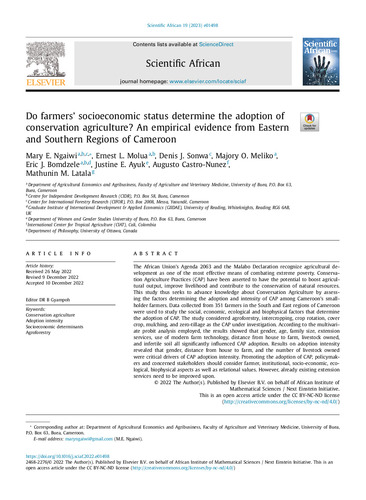Do farmers’ socioeconomic status determine the adoption of conservation agriculture? An empirical evidence from Eastern and Southern Regions of Cameroon
The African Union’s Agenda 2063 and the Malabo Declaration recognize agricultural development as one of the most effective means of combating extreme poverty. Conservation Agriculture Practices (CAP) have been asserted to have the potential to boost agricultural output, improve livelihood and contribute to the conservation of natural resources. This study thus seeks to advance knowledge about Conversation Agriculture by assessing the factors determining the adoption and intensity of CAP among Cameroon’s smallholder farmers. Data collected from 351 farmers in the South and East regions of Cameroon were used to study the social, economic, ecological and biophysical factors that determine the adoption of CAP. The study considered agroforestry, intercropping, crop rotation, cover crop, mulching, and zero-tillage as the CAP under investigation. According to the multivariate probit analysis employed, the results showed that gender, age, family size, extension services, use of modern farm technology, distance from house to farm, livestock owned, and infertile soil all significantly influenced CAP adoption. Results on adoption intensity revealed that gender, distance from house to farm, and the number of livestock owned were critical drivers of CAP adoption intensity. Promoting the adoption of CAP, policymakers and concerned stakeholders should consider farmer, institutional, socio-economic, ecological, biophysical aspects as well as relational values. However, already existing extension services need to be improved upon.

